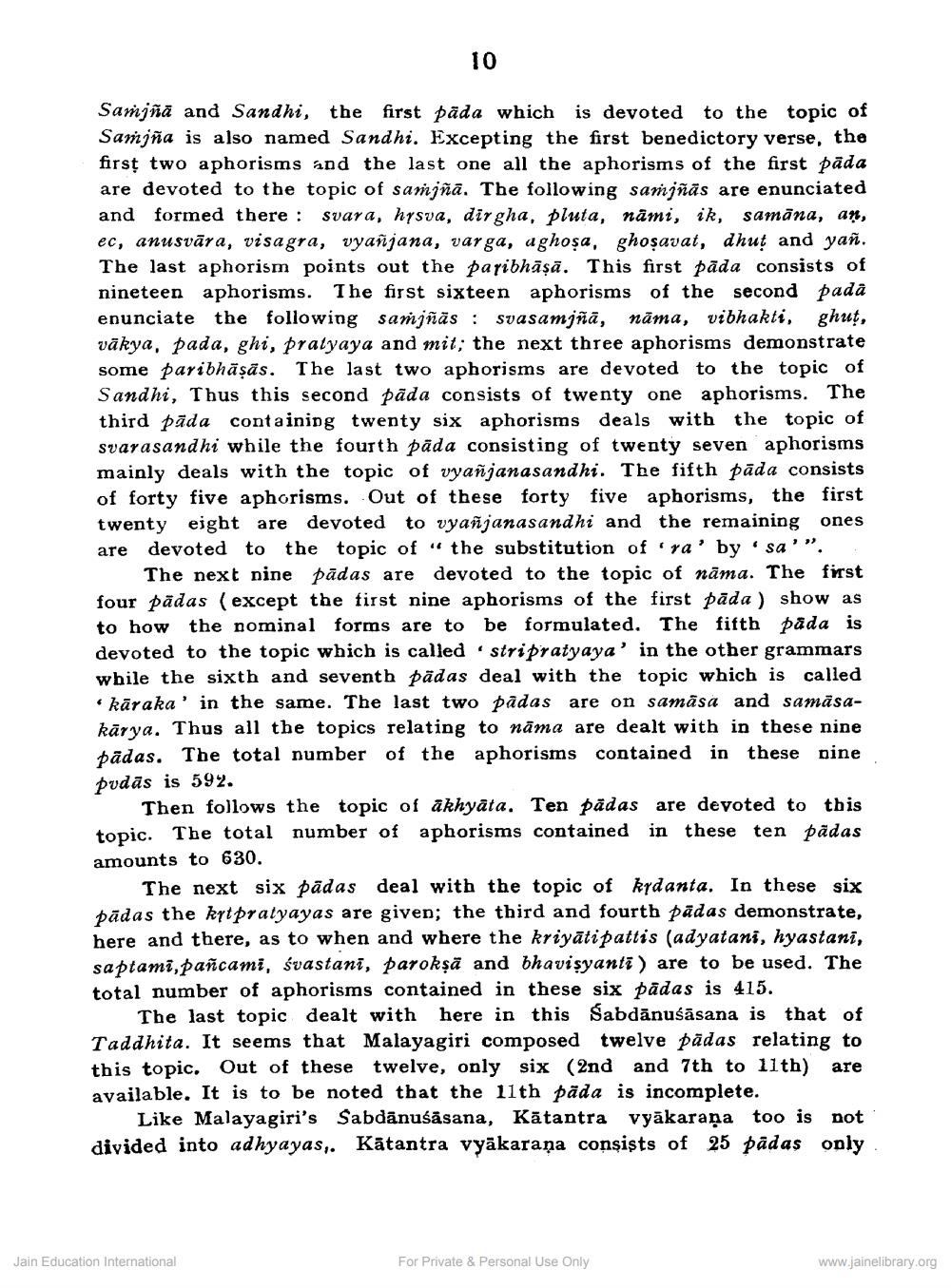________________
10
Samjña and Sandhi, the first pada which is devoted to the topic of Samjña is also named Sandhi. Excepting the first benedictory verse, the first two aphorisms and the last one all the aphorisms of the first pada are devoted to the topic of samjña. The following samjñās are enunciated and formed there : svara, hysva, dirgha, pluta, nami, ik, samāna, an, ec, anusvāra, visagra, vyanjana, varga, aghosa, ghosavat, dhut and yan. The last aphorism points out the paribhāṣā. This first pāda consists of nineteen aphorisms. The first sixteen aphorisms of the second pada enunciate the following samjñās : svasamjñā, nāma, vibhakti, ghut, vākya, pada, ghi, pratyaya and mit; the next three aphorisms demonstrate some paribhāṣās. The last two aphorisms are devoted to the topic of Sandhi, Thus this second pāda consists of twenty one aphorisms. The third pāda containing twenty six aphorisms deals with the topic of svarasandhi while the fourth pada consisting of twenty seven aphorisms mainly deals with the topic of vyañjanasandhi. The fifth pāda consists of forty five aphorisms. Out of these forty five aphorisms, the first twenty eight are devoted to vyañjanasandhi and the remaining ones are devoted to the topic of " the substitution of 'ra' by 'sa'".
The next nine pādas are devoted to the topic of nāma. The first four pādas (except the first nine aphorisms of the first pāda) show as to how the nominal forms are to be formulated. The fifth pada is devoted to the topic which is called stripratyaya' in the other grammars while the sixth and seventh pädas deal with the topic which is called • kāraka' in the same. The last two pādas are on samāsa and samāsakārya. Thus all the topics relating to nāma are dealt with in these nine pādas. The total number of the aphorisms contained in these nine pvdās is 592.
Then follows the topic of ākhyāta. Ten pādas are devoted to this topic. The total number of aphorisms contained in these ten pādas amounts to 630.
The next six pādas deal with the topic of krdanta. In these six pādas the kytpratyayas are given; the third and fourth padas demonstrate, here and there, as to when and where the kriyāti pattis (adyatani, hyastani, saptami, pañcami, śvastani, parokşā and bhavisyanti ) are to be used. The total number of aphorisms contained in these six pādas is 415.
The last topic dealt with here in this Sabdānuśāsana is that of Taddhita. It seems that Malayagiri composed twelve pādas relating to this topic. Out of these twelve, only six (2nd and 7th to 11th) are available. It is to be noted that the 11th päda is incomplete.
Like Malayagiri's Sabdānuśāsana, Kātantra vyākarana too is not divided into adhyayas,. Kātantra vyākaraṇa consists of 25 pādas only
Jain Education International
For Private & Personal Use Only
www.jainelibrary.org




